Understanding the Importance of Protecting Wooden Floors
Wooden floors are a valuable asset for both homeowners and business owners, as they enhance the aesthetic appeal and value of a property. it is crucial to protect wooden floors from scratches to maintain their beauty and longevity.
Protecting wooden floors from scratches is important for several reasons. scratches can make the wood appear dull and worn, diminishing its overall aesthetic appeal. This can significantly impact the visual appeal of a space, whether it is a residential or commercial setting. scratches can devalue the floor, making it less desirable to potential buyers or tenants. This can be a significant concern for homeowners looking to sell their property or business owners aiming to attract customers.
Scratches on wooden floors can be caused by various factors, with high heels and shoes being the most common culprits. The sharp edges of high heels and the hard soles of shoes can leave deep scratches on the surface of the wood. Other common causes of scratches include furniture, pets, and everyday wear and tear.
To protect wooden floors from scratches, several measures can be taken. Using protective mats and rugs in high traffic areas can help reduce friction and minimize the risk of scratches. Additionally, placing furniture pads or felt pads on the legs of furniture can prevent them from scratching the floor when moved. Regular cleaning and maintenance, such as sweeping and vacuuming, can also help remove dirt and debris that may cause scratches.
By taking proactive steps to protect wooden floors from scratches, homeowners and business owners can ensure that their floors remain visually appealing and maintain their value for years to come.
The Impact of High Heels and Shoes on Wooden Floors
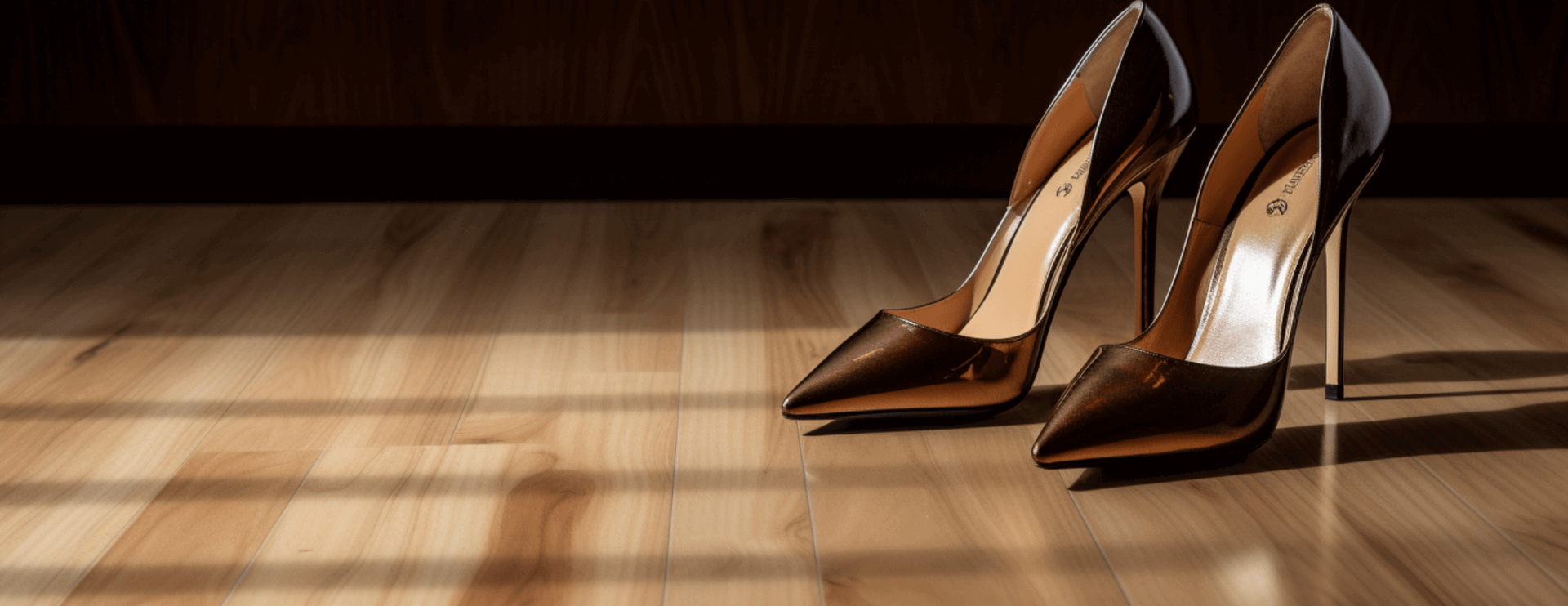
High heels and shoes can cause scratches on wooden floors due to the sharp edges of the heels and the hard soles of the shoes. The pressure and friction created by the shoes can cause the wood to become scratched and worn over time. The severity of the scratches can depend on the type of shoe and the frequency of wear.
Shoes with hard soles, such as leather or rubber, are more likely to cause scratches than those with softer soles, such as canvas or suede. Additionally, shoes that are worn frequently are more likely to cause scratches than those that are worn less often.
To minimize the risk of scratches, it is important to choose shoes that are less likely to cause damage. Shoes with softer soles, such as canvas or suede, are less likely to cause scratches than those with hard soles. Additionally, avoiding shoes with metal or plastic components can help reduce the risk of scratches. Finally, limiting the frequency of wear can also help minimize the risk of scratches.
By taking these steps, homeowners and business owners can help protect their wooden floors from scratches caused by high heels and shoes. This proactive approach will ensure that the floors remain visually appealing and maintain their value for years to come.
Different Types of Wooden Floors and Their Susceptibility to Scratches
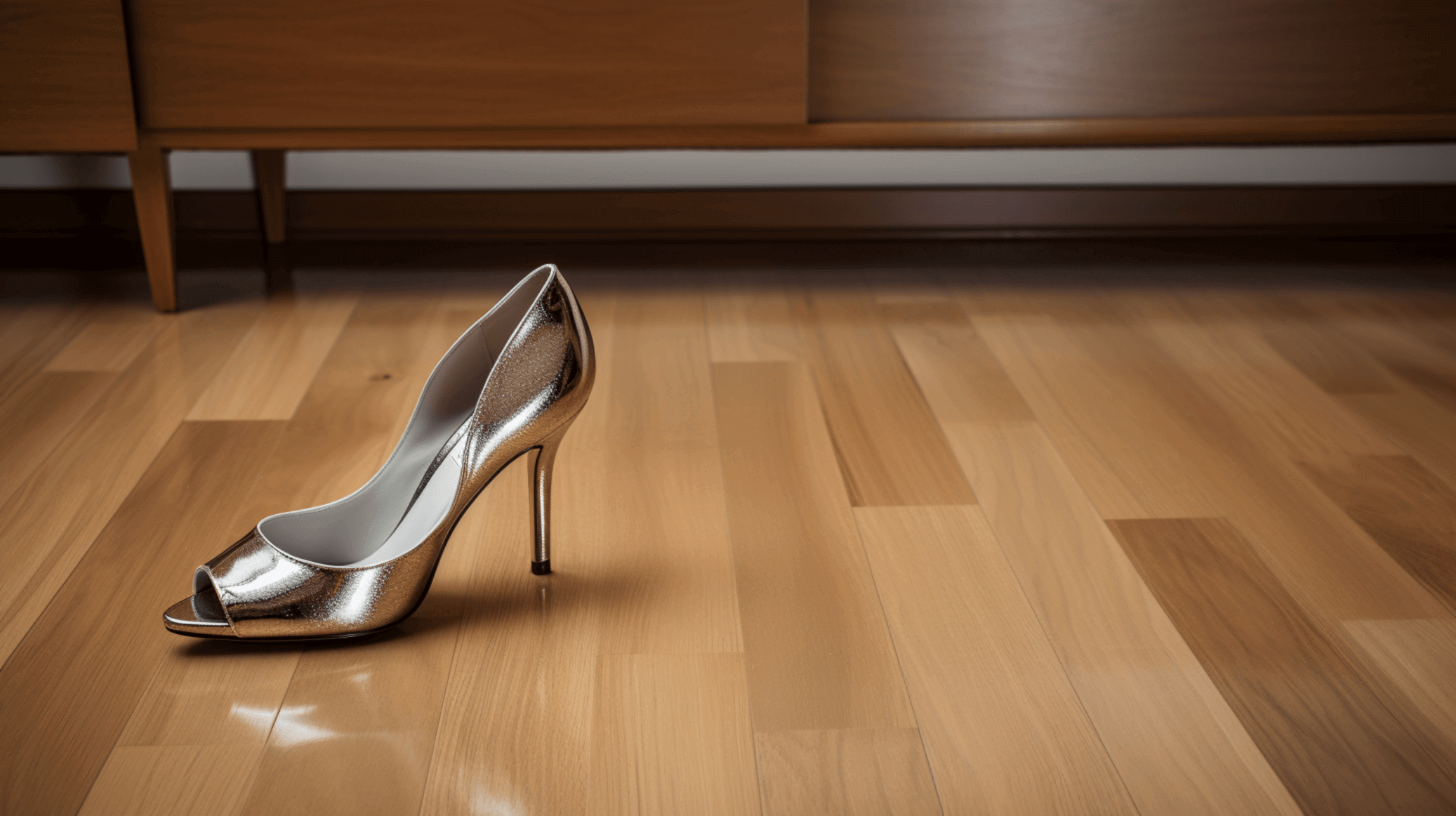
Wooden floors come in a variety of types, each with its own unique characteristics and susceptibility to scratches. The type of wood used in the flooring can have a significant impact on its susceptibility to scratches. Harder woods, such as oak and maple, are more resistant to scratches than softer woods, such as pine and cedar. Additionally, engineered wood floors, which are made up of multiple layers of wood, are more resistant to scratches than solid wood floors.
The finish of the floor can also affect its susceptibility to scratches. Floors with a glossy finish are more likely to show scratches than those with a matte finish. Additionally, floors with a textured finish, such as hand-scraped or distressed wood, are less likely to show scratches than those with a smooth finish.
It is important to choose a type of wood and finish that is most resistant to scratches to protect the wooden floors. Harder woods like oak and maple are recommended for areas with high foot traffic or where scratches are more likely to occur. Additionally, opting for a matte finish or a textured finish can help minimize the visibility of scratches.
By considering the type of wood, the finish, and taking preventive measures, homeowners and business owners can ensure that their wooden floors remain visually appealing and maintain their value for years to come.
Preventative Measures: How to Protect Your Wooden Floors from High Heels and Shoes
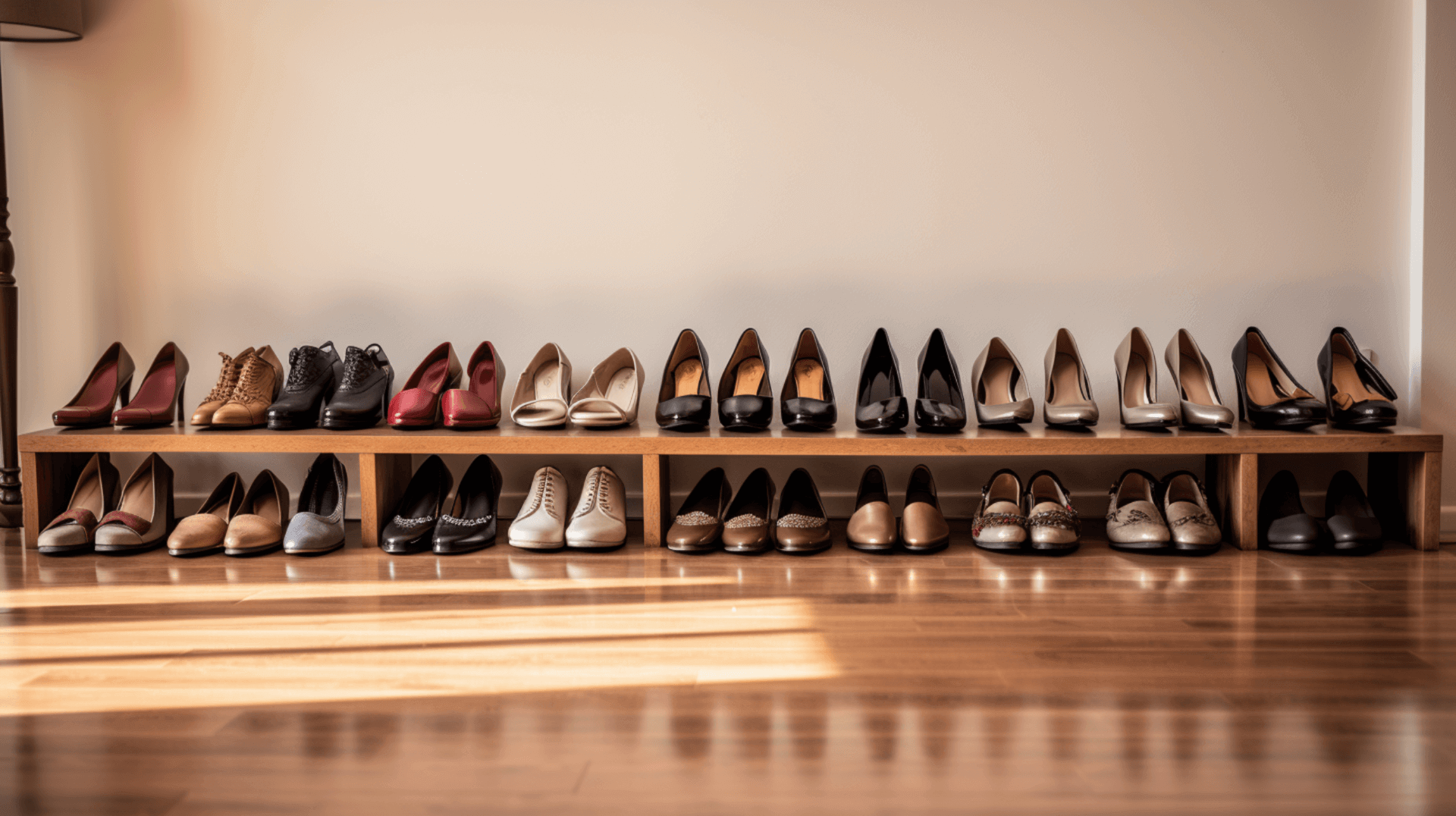
Protecting wooden floors from scratches caused by high heels and shoes is essential for maintaining their beauty and value. There are several preventative measures that can be taken to minimize the risk of scratches.
It is important to choose shoes that are less likely to cause damage. shoes with softer soles, such as canvas or suede, are less likely to cause scratches than those with hard soles. additionally, avoiding shoes with metal or plastic components can help reduce the risk of scratches.
Regular cleaning and maintenance can also help protect wooden floors from scratches. Sweeping and vacuuming can help remove dirt and debris that may cause scratches. Additionally, using protective mats and rugs in high traffic areas can help reduce friction and minimize the risk of scratches.
Furthermore, placing furniture pads or felt pads on the legs of furniture can prevent them from scratching the floor when moved. This is especially important for furniture with metal or plastic components. To ensure compliance with relevant national building regulations, it is advisable to check the manufacturer’s technical information for certification and details of Technical Approvals, such as an Agrment Certificate for specific applications.
By considering the type of shoes, regular maintenance, using protective mats and rugs, and placing furniture pads, individuals can safeguard their wooden floors and maintain their beauty and value for years to come.
The Role of Protective Coatings in Preventing Scratches

Protective coatings are an effective way to safeguard wooden floors from scratches caused by high heels and shoes. There are several types of protective coatings available, each with its own advantages and disadvantages.
Polyurethane is a popular choice for protecting wooden floors. It is a clear, hard coating that can be applied to both solid and engineered wood floors. Polyurethane forms a durable barrier against scratches and is relatively easy to apply.
Wax is another type of protective coating that can be used on wooden floors. It is applied as a liquid and then buffed to a shine. Wax provides a protective barrier against scratches and is easy to apply. it can be difficult to remove and may require professional help.
Oil-based finishes, such as tung oil, are also commonly used to protect wooden floors. These finishes penetrate the wood, enhancing its natural beauty while providing a protective layer against scratches. Oil-based finishes are easy to apply and require minimal maintenance, but they can be difficult to remove and may require professional help.
When selecting a protective coating, it is important to consider factors such as the level of foot traffic, desired level of gloss, and maintenance requirements. Additionally, it is advisable to check the manufacturer’s technical information for certification and details of specific applications to ensure compliance with relevant national building regulations.
The Importance of Proper Shoe Etiquette in Protecting Wooden Floors

Adopting a ‘no shoes’ policy is an effective way to protect wooden floors from scratches caused by high heels and shoes. This policy can be implemented in both residential and business settings.
In residential settings, individuals can opt to remove their shoes before entering the home. This can help reduce the risk of scratches and minimize the amount of dirt and debris that is tracked in. Additionally, providing slippers or house shoes for guests can help ensure that their feet are protected while indoors.
In business settings, it is important to establish a clear shoe etiquette policy. This policy should include guidelines for employees and visitors, such as removing shoes before entering the building or wearing protective shoe covers. Additionally, providing mats or rugs at the entrance of the building can help reduce the risk of scratches.
To further protect wooden floors, it is important to inspect the timber joists for signs of decay, infestation, and rot. Moisture content should not exceed 20% to prevent damage to the wooden floors. Using the correct type of nails for underlayment installation, such as ring shank nails, can also improve the holding characteristics and prevent floor movement that may lead to scratches.
Regular cleaning and maintenance are also crucial in preventing scratches. Sweeping and vacuuming the floors regularly will help remove dirt and debris that may cause scratches. Using the correct cleaning products and techniques, as well as avoiding harsh chemicals or abrasive materials, is essential.
By adopting a ‘no shoes’ policy, implementing shoe etiquette, inspecting timber joists, maintaining proper moisture levels, using the correct installation methods, and practicing regular cleaning and maintenance, both residential and business owners can effectively protect their wooden floors from scratches and maintain their beauty and value for years to come.
Repairing Scratches: When Prevention Isn’t Enough
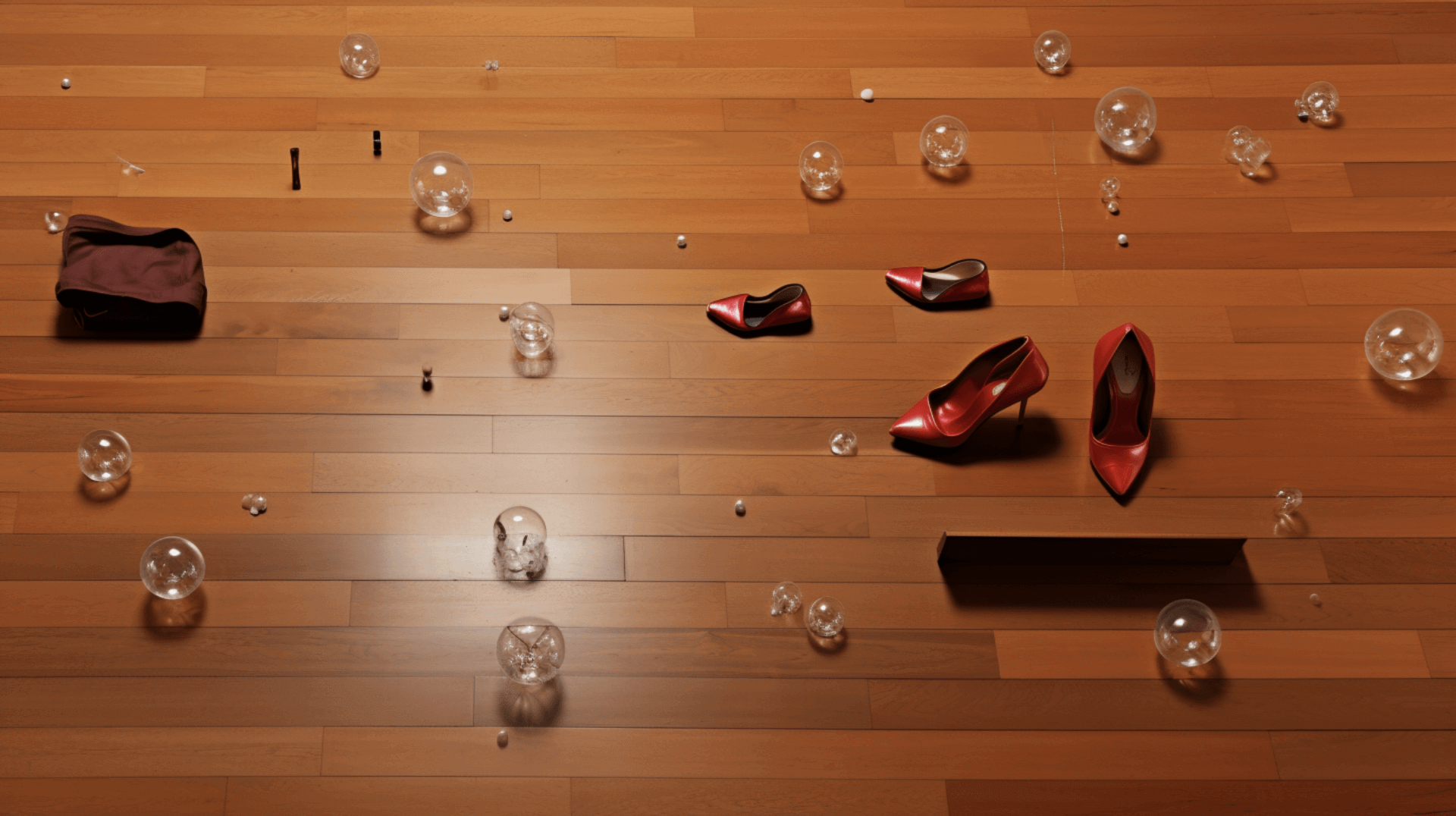
When prevention isn’t enough, repairing scratches on wooden floors is essential for maintaining their beauty and value. There are several methods for repairing scratches, depending on the severity of the damage.
For minor scratches, a simple cleaning and polishing may be enough to restore the floor’s original appearance. For deeper scratches, a wood filler may be necessary. This can be applied with a putty knife and then sanded down to blend with the surrounding wood.
For more severe scratches, a professional repair may be necessary. Professional scratch repair services can restore the floor to its original condition. This may involve sanding, staining, and refinishing the floor.
When determining the severity of a scratch and the appropriate repair method, it is important to consider factors such as the type of wood, the depth of the scratch, and the amount of traffic the floor receives. Additionally, it is important to check the manufacturer’s technical information for certification and details of specific applications to ensure compliance with relevant national building regulations. It is also important to inspect the timber joists for signs of decay, infestation, and rot, and to verify that the moisture content does not exceed 20%.
By using the appropriate repair methods and considering the specific needs of the wooden floor, homeowners and business owners can effectively repair scratches and maintain the beauty and value of their floors.
The Role of Professional Floor Sanding in Maintaining Wooden Floors
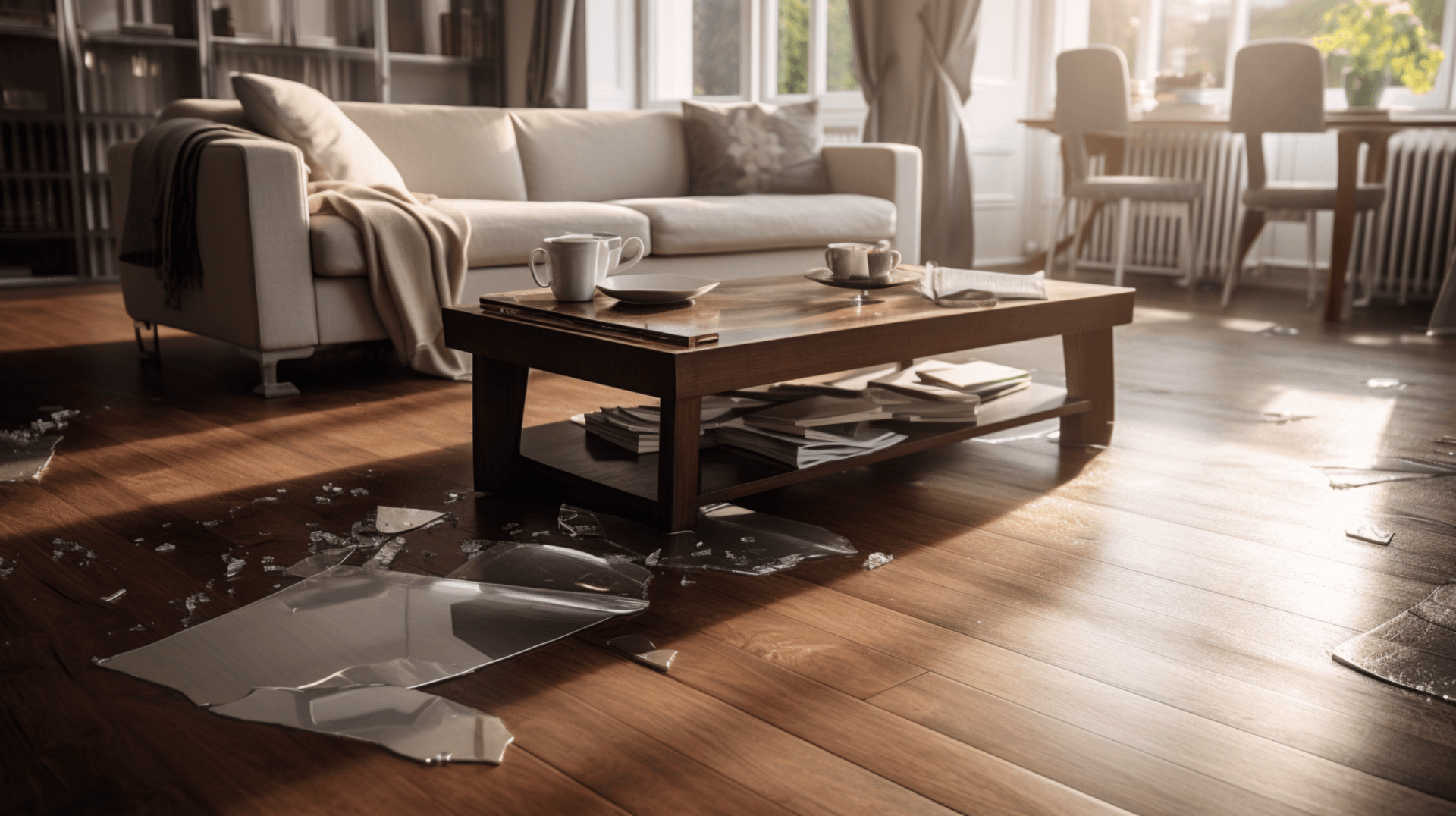
Professional floor sanding is an essential process for maintaining the quality of wooden floors. It involves using specialized equipment, such as a drum sander, to remove scratches, imperfections, and the top layer of the wood. This process not only restores the floor’s appearance but also prepares it for refinishing.
After the sanding process, it is crucial to address any underlying issues that may affect the floor’s quality. This includes repairing defects, improving ventilation, and installing insulation if necessary. By addressing these issues, the floor’s longevity and performance can be significantly improved.
To ensure compliance with relevant national building regulations, it is important to inform the customer about the work being carried out. This includes explaining any inaccessible areas, such as rooms where floorboards are lifted. Additionally, appropriate cordoning or barriers should be used to prevent accidents or hazards during the sanding process. Following the manufacturer’s safety recommendations is also essential for a successful floor sanding project.
When choosing a professional floor sanding service, consider reputable companies like GJP Floor Sanding. With over 20 years of experience, GJP Floor Sanding offers dust-free sanding, restoration, and refinishing services. Our expertise and attention to detail ensure that wooden floors are properly maintained and restored to our original beauty, while also meeting the necessary safety and regulatory requirements.
Cost Considerations in Protecting and Repairing Wooden Floors
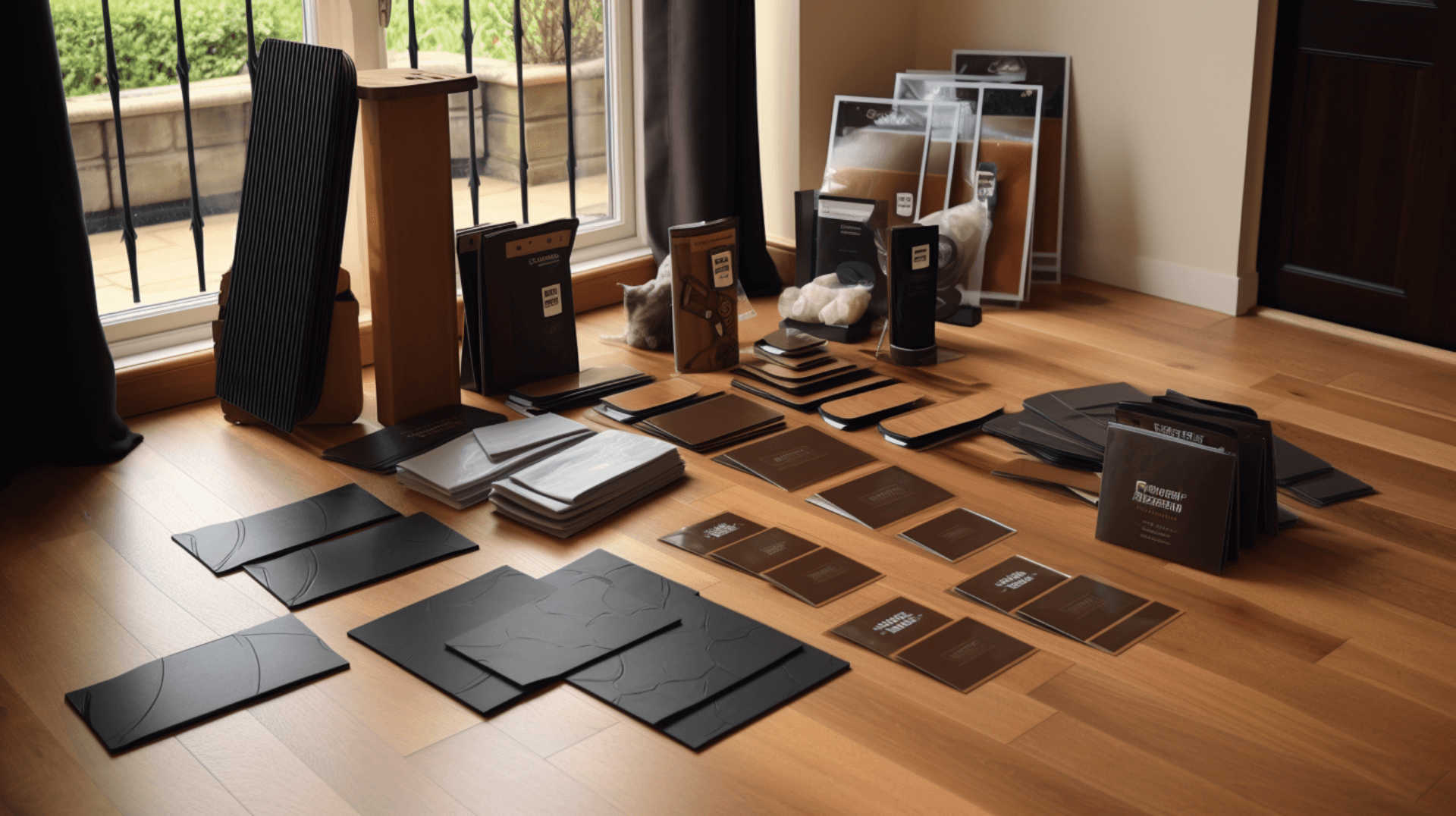
Protecting and repairing wooden floors can be a costly endeavor. investing in prevention and maintenance can be more cost-effective in the long run.
The cost of prevention includes implementing a ‘no shoes’ policy, establishing shoe etiquette, inspecting timber joists, maintaining proper moisture levels, using the correct installation methods, and practicing regular cleaning and maintenance. These measures can help reduce the risk of scratches and prolong the life of the floor. Additionally, it is important to verify the address for installation, ensure the technician presents their credentials to the customer, and use shoe protectors/covers when entering the property. Clear communication with the customer about any necessary precautions, such as removing materials or possessions that restrict access to the floor, is crucial. If needed, the technician should seek permission to remove materials and possessions on behalf of the customer and use dust sheets to protect the customer’s property. After completing the work, all packaging and waste materials must be properly disposed of, and any mess should be cleaned up promptly. If the customer’s toilet facilities are needed, permission should be sought. By following these guidelines, disputes with the customer can be avoided.
When it comes to repair, the cost implications can vary depending on the severity of the damage. For minor scratches, a simple cleaning and polishing may be enough to restore the floor’s original appearance. for deeper scratches, a wood filler may be necessary. In more severe cases, professional repair services may be required, which can involve sanding, staining, and refinishing the floor.
Investing in professional services like GJP Floor Sanding can be cost-effective in the long run. Our expertise and attention to detail ensure that wooden floors are properly maintained and restored to our original beauty, while also meeting safety and regulatory requirements. By addressing any issues promptly and using professional services, homeowners and business owners can avoid more extensive and costly repairs in the future, ultimately saving money and preserving the value of our wooden floors.
It is important to follow the manufacturer’s safety recommendations when sanding the floor, such as using the correct type of nails for underlayment installation, such as ring shank nails, and using the correct cleaning products and techniques, as well as avoiding harsh chemicals or abrasive materials. Clear communication and addressing any concerns or questions from the customer can help avoid disputes and ensure a satisfactory outcome.
Case Study: Successful Scratch Prevention and Repair with GJP Floor Sanding
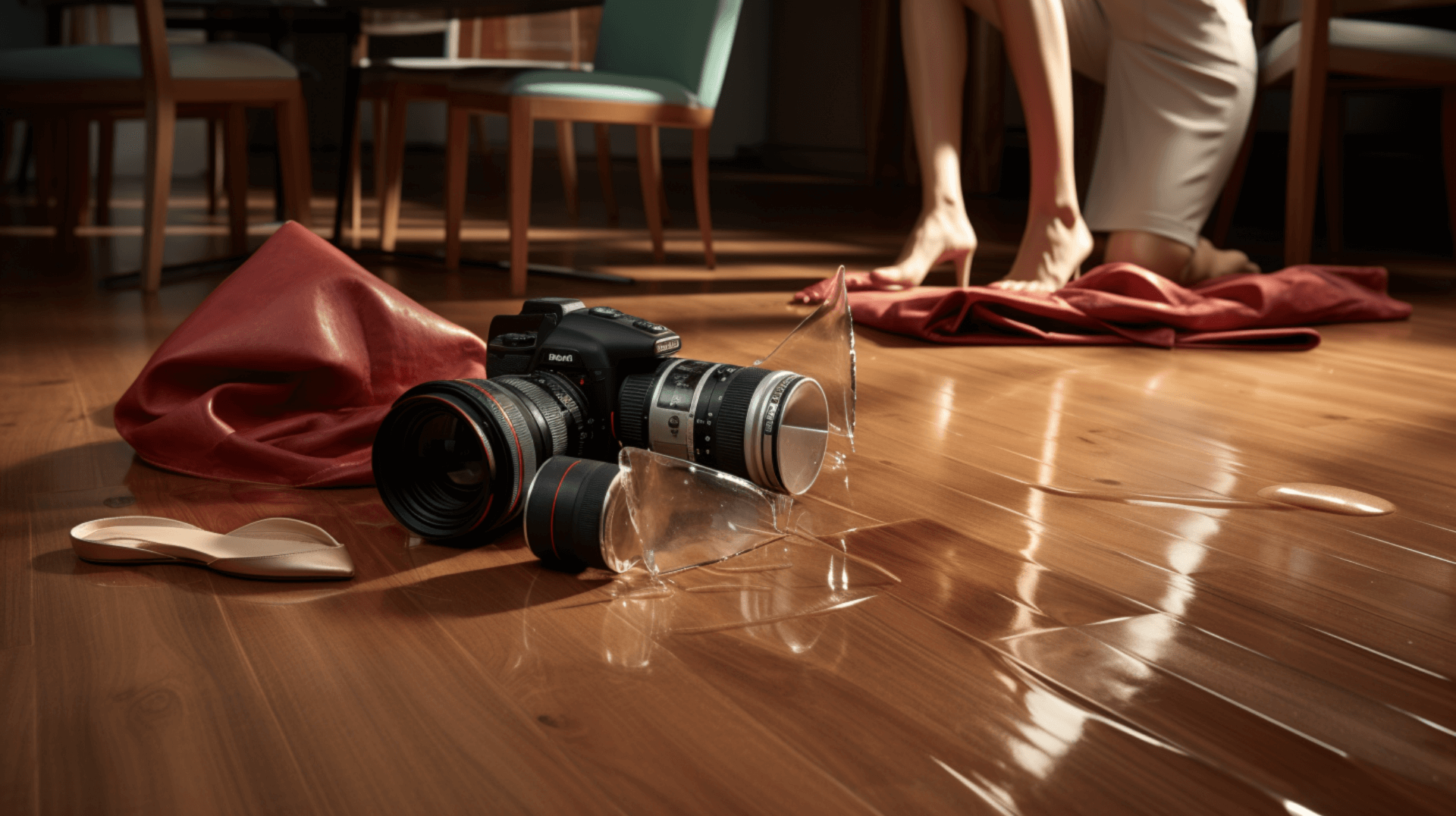
GJP Floor Sanding has successfully helped homeowners and businesses protect and repair our wooden floors. Our expertise and attention to detail ensure that wooden floors are properly maintained and restored to our original beauty, while also meeting safety and regulatory requirements.
In one success story, GJP Floor Sanding was called in to repair a wooden floor that had been damaged by a leaking pipe. After assessing the damage, we determined that the floor needed to be sanded, stained, and refinished. We also identified underlying issues that needed to be addressed, such as improving ventilation and installing insulation to comply with the current relevant national building regulations. To achieve this standard, GJP Floor Sanding followed the manufacturer’s guidance for this level of performance, using materials that are appropriately certified for use as insulation under timber floors. We checked the manufacturer’s technical information to ensure the material was suitable for using as UFI.
GJP Floor Sanding used a dust-free sanding process to remove the scratches and imperfections, and then applied a stain to match the original color of the floor. After the stain was dry, we applied a protective finish to enhance the durability of the floor. By addressing the underlying issues and using the appropriate repair methods, GJP Floor Sanding successfully restored the floor to its original condition, ensuring compliance with safety and regulatory requirements.
These clients have benefited from GJP Floor Sanding’s services by having our wooden floors effectively repaired and restored. The attention to detail, use of high-quality materials, and compliance with safety and regulatory standards ensure long-lasting results. By choosing GJP Floor Sanding, homeowners and business owners can trust that our wooden floors will be properly maintained and preserved.
Expert Advice: Tips from GJP Floor Sanding Professionals

GJP Floor Sanding professionals have a wealth of experience in protecting and repairing wooden floors. We have a few expert tips for homeowners and business owners to help protect our wooden floors from scratches.
They recommend implementing a ‘no shoes’ policy and establishing shoe etiquette. this will help reduce the risk of scratches and prolong the life of the floor. additionally, they suggest inspecting timber joists, maintaining proper moisture levels, using the correct installation methods, and practicing regular cleaning and maintenance. it is also important to probe with a sharp implement, like a bradawl, to detect the presence of internal decay in large-section timbers. visual inspection of all of the floor pipes in the sub-floor voids should also be considered in the design or installation of insulation.
Common misconceptions about wooden floor care include the belief that all wooden floors are the same and require the same care. this is not the case. Different types of wood require different care and maintenance, and it is important to understand the specific needs of the floor before attempting any repairs or maintenance.
To incorporate these expert tips into your floor care routine, it is important to follow the manufacturer’s safety recommendations when sanding the floor, such as using the correct type of nails for underlayment installation, such as ring shank nails, and using the correct cleaning products and techniques. Clear communication and addressing any concerns or questions from the customer can help avoid disputes and ensure a satisfactory outcome. By following these expert tips, you can effectively protect and maintain your wooden floors for years to come.
Contact Us: Get in Touch with GJP Floor Sanding for Your Wooden Floor Needs
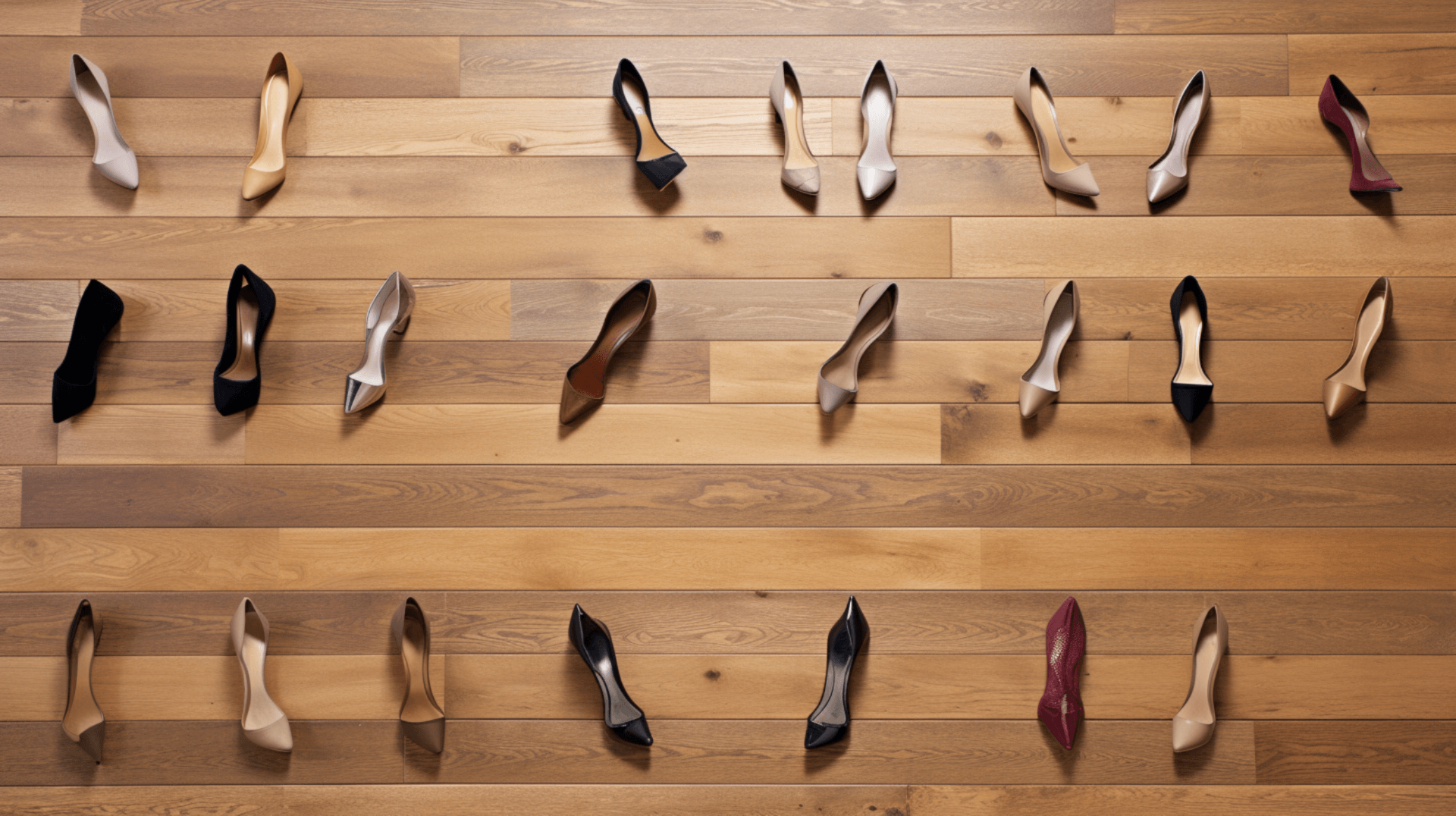
GJP Floor Sanding is the perfect choice for all your wooden floor needs. We offer a wide range of services to help protect and repair your wooden floors, including dust-free sanding, staining, and insulation installation. Our experienced professionals are knowledgeable in various aspects of floor care, including ventilation, material conformity, building regulations, and installation considerations.
When it comes to ventilation, GJP Floor Sanding ensures proper provision of ventilation to the main dwelling and sub-floor areas. We also address moisture control barriers, cold bridging, and protected species to comply with building regulations and minimize risks. Our expertise extends to installation methods, including options for insulating a suspended timber floor. We follow guidance from BR262 Thermal Insulation Avoiding Risk and can apply roll or batt insulation or use spray foam for insulation purposes.
GJP Floor Sanding also takes into account the presence of services such as water pipes, gas pipes, electrical wiring, flues, underfloor heating, and damp-proof courses during our installation process. We make sure to consider these factors and provide appropriate solutions to ensure the integrity and functionality of the wooden floors.
Our attention to detail and adherence to safety standards make GJP Floor Sanding the ideal choice for homeowners and business owners. By choosing our services, you can trust that your wooden floors will be properly maintained, repaired, and protected. Contact GJP Floor Sanding for all your wooden floor needs and experience our exceptional services.
